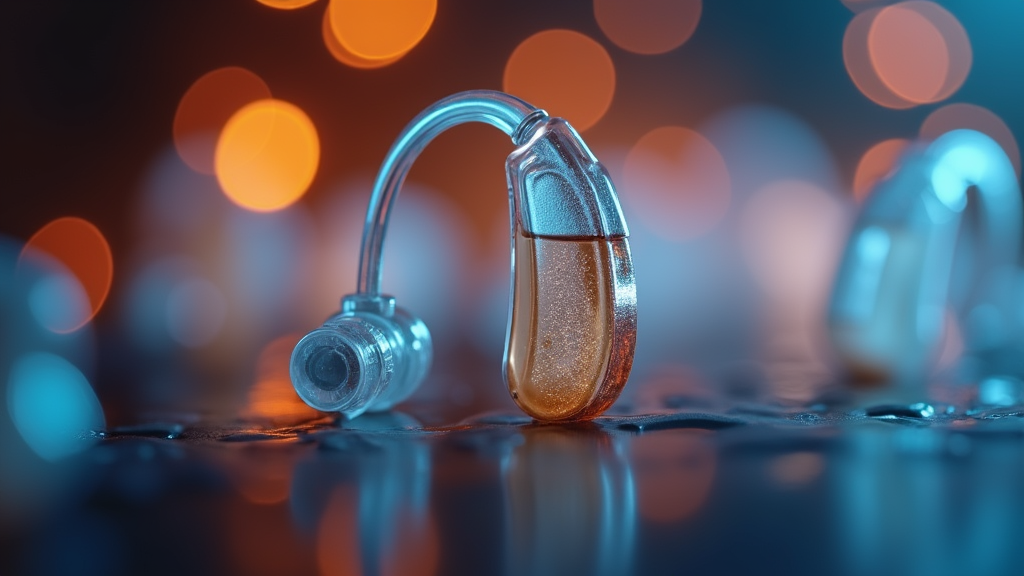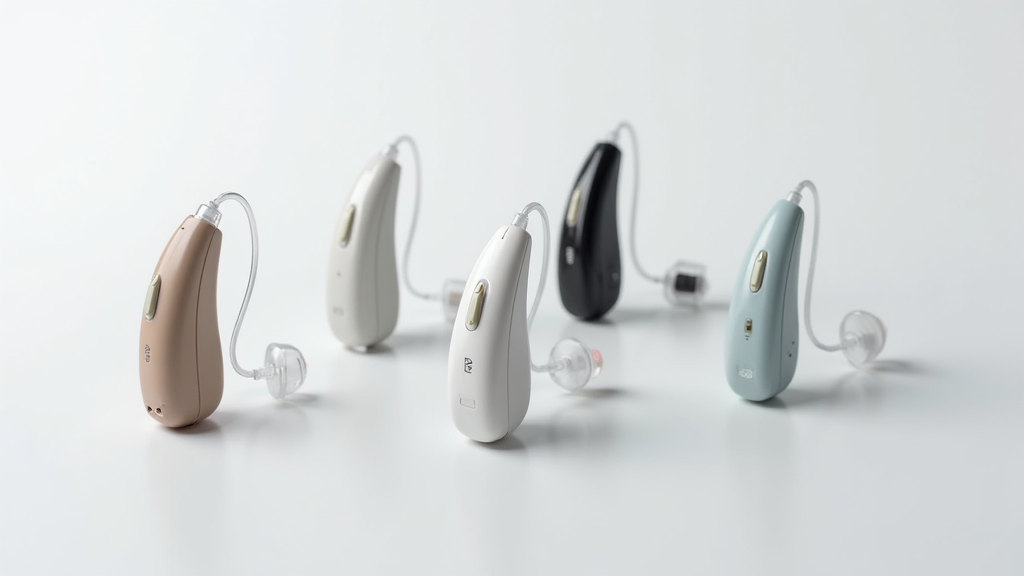Finding the right hearing aid for your child can feel both exciting and a little overwhelming. A proper hearing aid not only supports your child in developing language and communication skills but also improves their quality of life.
In this article, I share my insights into what to consider and how to choose the best hearing aid for your child, outlining key points and practical advice to help you navigate through the choices available.

The Basics of Pediatric Hearing Aids
Hearing aids for children are specially designed devices that accommodate the needs of young listeners. They provide clear sound quality and often incorporate extra features that help manage varied sound environments, from quiet classrooms to noisy playgrounds.
Unlike adult models, pediatric hearing aids factor in smaller sizes, longer battery life, and high durability. In my experience, understanding these basics is an important step toward making an informed choice.
The importance of selecting a hearing aid that fits both your child’s physical needs and their daily lifestyle cannot be overstated. Today’s devices come with features like directional microphones and wireless connectivity that work seamlessly with other gadgets.
Several companies, including Phonak and Resound, produce specialized pediatric models that combine advanced technology with dependable design to support early development.
Recommended Reading: Are There Hearing Aids for Swimmers?
Understanding The Key Components Of The Hearing Aid
Before you decide on a device for your child, it helps to understand the key elements of pediatric hearing aids.
These elements play a very important role in ensuring clear sound reception and long-lasting performance.
Here are a few terms and features frequently mentioned when evaluating these devices:
- Digital Signal Processing: This technology refines sound input and minimizes background noise, making speech clearer for young ears.
- Feedback Management: Designed to prevent distracting whistling sounds, this feature stabilizes audio output so that your child can listen comfortably.
- Connectivity: Many modern models support wireless connections with tablets, smartphones, and other devices, ensuring that your child stays connected in various environments.
Grasping what these technical terms mean has helped me guide many families through the process of selecting a device that matches both medical recommendations and lifestyle requirements.
Additionally, reading product reviews and consulting with trusted professionals, such as audiologists from HearUSA, can be very useful in making the best decision.
Steps to Start the Selection Process
Choosing a hearing aid for your child doesn’t have to be confusing. Breaking down the process into manageable steps is key. I always suggest starting with the following actions:
- Consult an Audiologist: A professional evaluation is the first step in determining your child’s specific hearing needs. Expert advice ensures that the chosen device matches your child’s audiological profile.
- Research Models: Spend some time comparing different models and reading about their features. Websites like Amazon offer a diverse range of products, but always compare user experiences and technical specifications.
- Consider Size and Comfort: Pediatric hearing aids need to be small, lightweight, and comfortable for daily wear. Some devices offer customizable fittings that provide an extra advantage for growing children.
- Budget and Insurance: Evaluate costs and check for insurance coverage. Many providers offer financing plans or subsidies that help ease the financial burden.
- Trial Periods: Opt for companies that offer trial periods so you can test the hearing aid under normal daily conditions. This option is particularly useful when adjusting to a new device.
Following these steps makes the process less daunting and ensures that your child receives a device suited to support both hearing and overall development.
Considerations and Common Challenges When Buying a Children’s Hearing Aid
Modern hearing aids are more advanced than ever, yet parents can still encounter challenges when choosing the best aid for a child.
Some common issues include battery life, device durability, and ensuring a comfortable fit for extended use.

Battery life is often a major concern because children may use their hearing aids for long school days and active play times.
It is very beneficial to choose a model with a long-lasting battery or rechargeable options. Look for devices that emphasize power efficiency and quick charging capabilities.
- Battery Life: Ensure that the model supports rechargeable batteries or comes with extra sets of batteries, reducing interruptions in daily use. Check out my hearing aid batteries guide.
- Durability and Weather Resistance: Kids are naturally active. The hearing aid should be robust enough to withstand occasional drops, exposure to moisture, and general rough handling.
- Ease of Use: Devices with simple, intuitive controls are easier for both children and parents to manage.
- Maintenance and Cleanliness: Given that children can be rough on gadgets, hearing aids that are easy to clean and maintain provide an extra layer of convenience.
Addressing these concerns early on by consulting your audiologist and speaking with other parents can substantially simplify your experience.
Moreover, many manufacturers now offer dedicated customer support to help with troubleshooting or to provide maintenance tips whenever needed.
Advanced Tips and Tricks
Once you’ve managed the basics of selecting and purchasing a hearing aid, there are additional strategies that can make managing your child’s hearing needs much easier over time.
Here are some advanced tips based on my own experience:
Technology Integration: Modern hearing aids often boast compatibility with smartphones and other digital devices. This means you can adjust settings remotely, monitor usage statistics and use accompanying apps to track progress.
Exploring and using these apps can be a fun family activity that also offers valuable insights into your child’s auditory improvements.
Regular Follow-ups: Scheduling consistent appointments with your audiologist after your child starts using the device is essential.
These follow-ups not only help fine-tune the hearing aid but also ensure that any performance issues are addressed promptly.
Educational Resources and Support Groups: Joining support groups for parents of children with hearing aids can be immensely helpful.
These communities provide practical advice, helpful resources, and shared personal experiences that can ease concerns and offer new ideas.
Incorporate Fun Activities: For younger children, integrating fun activities that promote active listening is very important. Whether through interactive games or engaging musical exercises, making the process enjoyable helps normalize the use of the hearing aid.
Technology in hearing aids never stops improving. Some newer models even offer features that automatically adjust sound settings based on the environment, ensuring optimal performance at all times. Keeping an eye on these innovations can provide that extra edge in delivering a quality auditory experience.
Frequently Asked Questions
Below are some questions that I frequently encounter along with answers that address common concerns:
Question: How do I know if my child needs a hearing aid?
Answer: A thorough hearing test conducted by a professional is the best way to determine if your child might benefit from amplification. Early diagnosis and intervention are very important for supporting positive developmental outcomes.
Question: What features should I prioritize when choosing a hearing aid for my child?
Answer: Key features include comfort, durability, long battery life, and ease of use. It’s also important to look for devices with wireless connectivity and customizable settings to fit your child’s daily activities.
Question: Are there financing or insurance options available for pediatric hearing aids?
Answer: Many manufacturers and healthcare providers offer financing plans and accept insurance. It’s advisable to check with your provider to see if your purchase might be partially covered or if there are suitable payment options available for families.
Question: How do I take proper care of my child’s hearing aid?
Answer: Routine cleaning and regular check-ups with an audiologist will help maintain the device. Always store the hearing aids in a safe, dry place, and follow the manufacturer’s guidelines on care and maintenance.
Looking Ahead: Taking the Next Steps
Choosing the right hearing aid for your child is a significant step towards ensuring they have the best opportunity to develop strong communication skills and actively engage with the world around them.
While the process involves several important considerations, being well-informed and proactive can make the entire experience much smoother.
I encourage you to take the time to compare various devices, read user reviews, and have in-depth discussions with professionals.
Websites like Amazon and specialized hearing aid providers offer detailed product pages that can help in making a sound decision. Additionally, connecting with professionals or joining online forums where other parents share their experiences can provide additional support during this process.
Investing time in research and consultation not only leads to a better match in terms of technology but also brings peace of mind knowing that your child is equipped with a device tailored just for their unique needs.
Scheduling a professional evaluation and becoming familiar with the range of available choices will help ensure that your child enjoys improved communication and daily confidence.
It is also worthwhile to keep an eye on emerging trends and technological improvements. As hearing aids continue to evolve, new features may offer enhanced sound clarity, easier connectivity, and even greater adaptability to different environments.
This ongoing development means that today’s decision is only the beginning of your child’s journey towards better hearing.
Additional Considerations for Long-Term Success
Beyond the initial selection and testing, long-term success with pediatric hearing aids depends on a number of factors.
It is very important to establish a routine of regular maintenance checks even after the device has been fitted. Over time, as your child grows, adjustments may be necessary to ensure continued comfort and optimal performance. Regular consultations with your audiologist can help address any changes in hearing needs.
Parents should also consider setting aside time to educate their child about the benefits and proper use of their hearing aid.
Age-appropriate explanations and practices can help the child feel more comfortable with the technology.
For instance, turning the device on and off, checking the battery levels, and cleaning it gently can become a part of the daily routine. With these habits in place, your child may also feel more confident in communicating with peers and teachers.
Furthermore, sharing experiences with other families facing similar challenges can make a significant difference. Local or online support groups not only offer practical tips but also provide emotional support. Hearing success stories from other parents may encourage you to explore additional features or accessories that could further improve the hearing aid’s performance. Remember, ensuring that your child’s hearing device is up to date might just be the extra boost needed for their continued progress.

Final Thoughts
Selecting a hearing aid for your child is both an emotional and practical process. By understanding the basics, taking one step at a time through the selection process, and planning for ongoing care, you lay the groundwork for a positive auditory experience.
Embrace the process with detailed research and careful planning. Remember that a well-chosen hearing aid can be a valuable tool that supports your child’s communication skills and overall quality of life.
Every parent wants what is best for their child. Taking the time to explore different options, comparing features, and discussing concerns with professionals ultimately empowers you to make a confident decision.
The journey might seem challenging at times, but each step brings you closer to finding a device that fits perfectly with your child’s needs. Your commitment today will make a big difference in your child’s ability to connect and thrive in a world full of sounds.
Bottom line: a thoughtful approach combined with the right resources will help you secure a long-lasting, efficient hearing aid that promotes your child’s well-being. With careful evaluation, proper follow-up, and an openness to new technological developments, you are setting the stage for your child to enjoy every sound that life has to offer.
Remember, even small improvements can lead to remarkable progress in communication, learning, and social interactions.
Wishing you everything of the best on your hearing aid selection process
Regards and Take Care
Roopesh

Choosing the right hearing aid for your child is such an important decision, and it’s great to see a discussion about it. The article does a fantastic job highlighting how crucial it is to consider your child’s specific needs, lifestyle, and comfort when selecting a hearing aid. Since children’s hearing needs can evolve as they grow, the adaptability of the hearing aid is a big factor. Features like durability, ease of use, and the ability to handle everyday activities (like playing or sports) are key.
What really stood out to me in the discussion is the importance of consulting with an audiologist who specializes in pediatric care. They can help assess the best options based on your child’s hearing loss and how it impacts their speech and language development. A good fit will not only improve hearing but also enhance the child’s overall communication skills.
From my experience, it’s also helpful to think about the support that comes with the hearing aid, like ongoing adjustments, repairs, and accessories. Some hearing aids also have connectivity features, such as Bluetooth, which can make things like classroom learning or social interactions easier for kids.
In my opinion, while it might seem overwhelming at first, with the right guidance and support, you can find a hearing aid that empowers your child to experience the world of sound more fully. It’s all about finding that balance between functionality, comfort, and durability.
Here’s a warm and appreciative response to the comment:
Thank you so much for your thoughtful and insightful comment! You’re absolutely right—choosing the right hearing aid for a child is a big decision, and adaptability plays a huge role as their needs change over time. Features like durability, ease of use, and compatibility with active lifestyles are definitely key considerations.
I also love that you highlighted the importance of working with a pediatric audiologist. Their expertise can make such a difference in ensuring that the hearing aid supports not just hearing, but also speech and language development. The right fit can truly empower a child in both learning and social settings.
And great point about connectivity features like Bluetooth! Technology has come such a long way, and options like direct streaming to devices can really enhance classroom learning and communication.
Thanks again for sharing your experience and perspective—it adds so much value to the discussion! ????